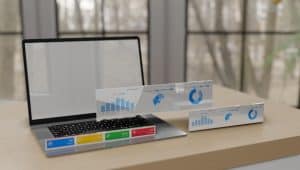The Evolution of Healthcare Communication
Gone are the days when medical practices relied solely on paper records and telephone calls. The shift towards digital healthcare communication has revolutionised patient care, particularly through centralised support systems. Take St. Mary’s Medical Centre, which partnered with specialised administrative teams in the Philippines, reducing their patient wait times by 67% while saving £45,000 annually on staffing costs.
The transformation from traditional methods has been remarkable. Rather than maintaining expensive in-house teams, forward-thinking healthcare providers now collaborate with dedicated offshore specialists who handle everything from appointment scheduling to patient follow-ups.
Modern Healthcare Contact Centres: A Comprehensive Approach
Contemporary healthcare contact centres serve as the backbone of patient communication. These hubs manage appointments, provide basic medical guidance, process insurance queries, and coordinate prescription services. The Brighton Medical Group demonstrated this brilliantly by engaging remote administrative professionals, resulting in a 40% reduction in missed appointments and a 25% increase in patient satisfaction scores.
The integration of advanced technology plays a crucial role. Remote teams utilise sophisticated patient management systems, ensuring seamless communication while maintaining strict data security protocols. These systems allow healthcare providers to focus on patient care whilst administrative tasks are handled by specialist teams abroad.
Creating Outstanding Patient Experiences
Modern healthcare communication centres excel through multichannel support. Whether patients prefer telephone calls, emails, live chat, or social media interactions, dedicated remote teams ensure consistent, professional responses across all platforms. The Manchester Women’s Clinic exemplifies this approach, having achieved a 90% patient satisfaction rate after partnering with overseas administrative specialists.
Personalisation remains paramount. Remote teams access patient histories securely, enabling them to provide contextually appropriate responses while maintaining cultural sensitivity. This level of service would typically require substantial local investment, but through strategic partnerships with overseas specialists, healthcare providers deliver exceptional care at reduced costs.
Performance Metrics and Quality Standards
Success in healthcare communication demands meticulous monitoring of key performance indicators. Response times, patient satisfaction scores, and resolution rates provide valuable insights. The Leeds General Practice Network reported a 30% improvement in these metrics after transitioning to an offshore administrative support model.
Quality assurance involves systematic call monitoring, comprehensive feedback analysis, and continuous improvement strategies. Remote teams undergo regular training and assessment, ensuring they maintain the highest standards of patient care and communication.
Advancing Healthcare Communication Technology
The future of healthcare communication presents exciting possibilities. Artificial intelligence integration, advanced chatbot solutions, and voice recognition technology are becoming increasingly prevalent. However, the human element remains essential. Remote administrative teams combine technological proficiency with genuine empathy, creating an optimal patient experience.
Workforce development continues through structured training programmes and clear career progression pathways. This investment in people, whether local or remote, ensures consistent service quality and patient satisfaction.
Implementing Effective Healthcare Communication Systems
Establishing robust healthcare communication systems requires careful planning and execution. The process begins with selecting appropriate technology platforms and recruiting qualified staff. The Norfolk Healthcare Trust successfully implemented this approach by partnering with specialist remote teams, achieving a 50% reduction in administrative costs while maintaining service excellence.
Monitoring and evaluation methods ensure continuous improvement. Regular performance reviews, patient feedback analysis, and staff development programmes create a cycle of enhancement. Remote teams often demonstrate higher engagement levels and lower turnover rates compared to traditional in-house solutions.
Healthcare providers increasingly recognise that partnering with specialist remote teams delivers substantial benefits. From reduced operational costs to improved patient satisfaction, the advantages are clear. As technology continues to advance and patient expectations evolve, this approach positions healthcare organisations for sustained success while maintaining focus on their core mission: delivering exceptional patient care.
The transformation of healthcare communication continues to accelerate. By embracing remote administrative partnerships, healthcare providers can ensure they remain at the forefront of patient care while optimising their resources and operational efficiency.






